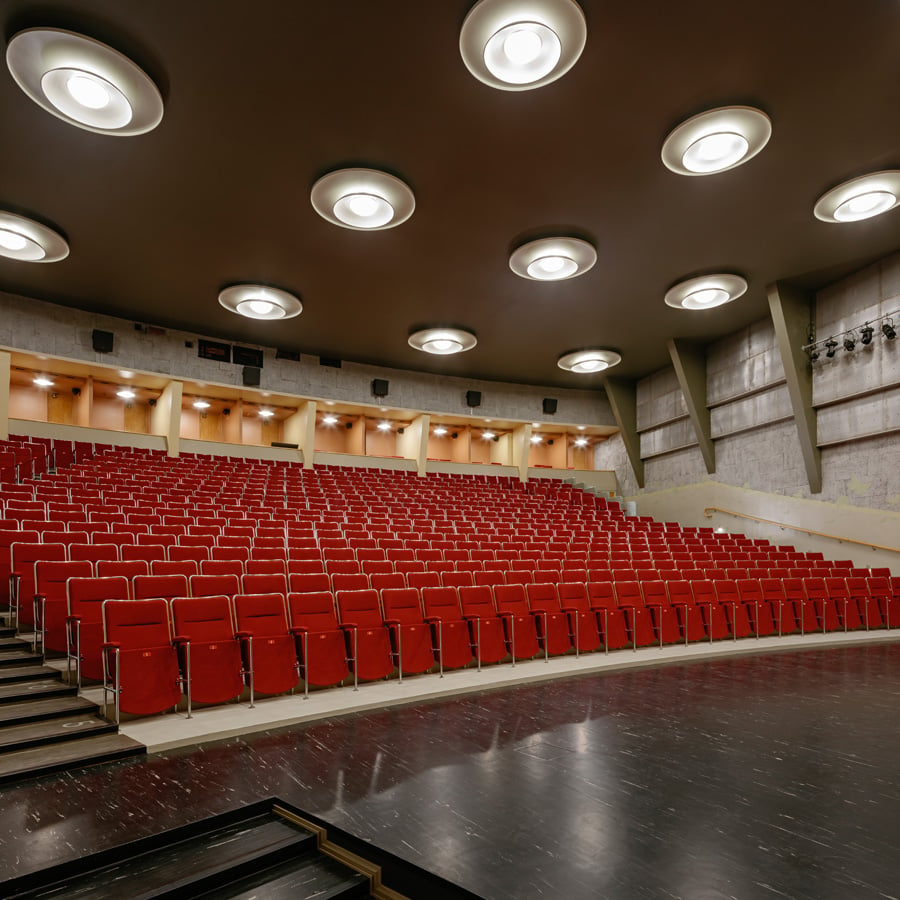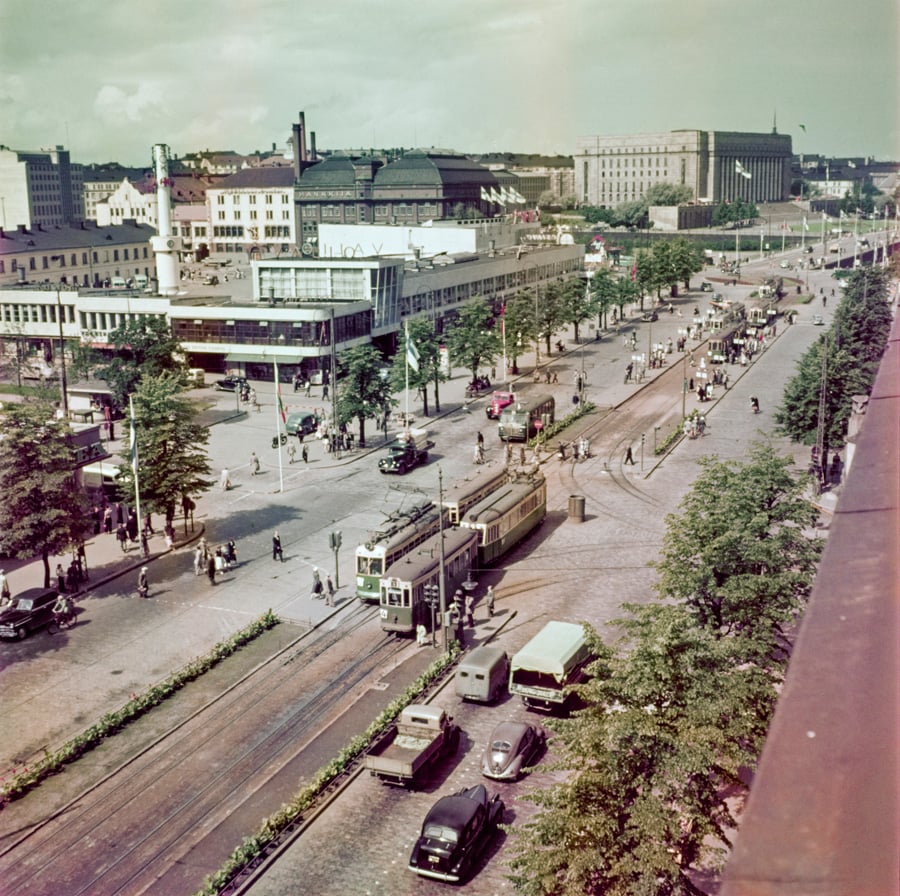
August 27, 2018
A Modernist Shopping Mall Is Reborn as an Exuberant Museum in Helsinki
The new bubble-like home for the Amos Rex art museum features futuristic subterranean galleries designed by local firm JKMM Architects.

“Helsinki is very much like an Emmental cheese,” says Kai Kartio, the head of the Amos Rex art museum in the Finnish capital. “It’s full of holes.”
In keeping with the Helsinkian practice of burrowing (the city has one of the most extensive underground tunnel networks in the world), local firm JKMM Architects scooped out dramatic, subterranean galleries beneath the Lasipalatsi, a Modernist shopping mall, to convert the historic structure into a new museum, which welcomes its first visitors Wednesday.
Previously located in a charming but clunky 1913 apartment and office building, the Amos Anderson Art Museum—named for a local newspaperman and arts patron—housed a collection of Finnish Modernist and contemporary art since its founding in 1965. Today the relocated Amos Rex occupies a much more prominent space in the renovated Lasipalatsi. “Everybody in Helsinki knows Lasipalatsi,” explains Kartio, “It’s the best possible location, it’s in the middle of all routes in the city.”
A former shopping and entertainment center, designed as a temporary structure for the 1940 Olympics (canceled on account of World War II) by the young architects Viljo Revell, Heimo Riihimäki, and Niilo Kokko, the Lasipalatsi is a glorious ensemble of curtain walls, cream curves, and custom neon signage. The listed status of the Lasipalatsi (“glass palace” in Finnish) means JKMM was unable to adapt the structure for use as exhibition spaces. Instead, the restored and repainted building serves as an entrance to the underground galleries and contains administration facilities, a restaurant, and the Bio Rex cinema (the “Rex” in the rechristened museum’s name).
In its new home, Amos Rex joins a spine of major cultural institutions that progresses north to south from Alvar Aalto’s Finlandia Hall through the National Museum of Finland, the Helsinki Music Centre, forthcoming Oodi Central Library, and Steven Holl’s Kiasma Museum of Contemporary Art.
Unlike Holl’s Kiasma galleries, however, Amos Rex is far from a conventional white cube. The underground exhibition spaces, contained within a half-acre cavern, are sheltered by two undulating domed roofs, their undersides clad with thousands of acoustically-treated steel discs. These flexible spaces will play host to large-scale installations as well as conventional gallery exhibitions.

“It’s not about just hanging things on the wall any more, or putting a sculpture to stand in the middle of a beautiful space,” Kartio says. “We have no idea what kind of visual work we are going to be surrounded by in 20 or 30 years’ time. So we wanted a space that would be as open as possible, a space that would put as few limits on what one is able to install there as possible.”
It’s an undeniably impressive space and a bold approach to gallery design. While the domes work fantastically for the inaugural show, Massless, a series of immersive environments with digitally projected work by Tokyo-based collective teamLab, more conventional shows may prove to be more challenging. As with Zaha Hadid’s MAXXI, the dramatic architecture may prove distracting or simply impractical for showing Amos Rex’s collection of Post-Impressionists.
Above ground, the domes perforate a public square with nipple-like skylights. Here, three centuries of Helsinki’s history play out between the interaction of three structures: the remains of a 19th century barracks building, the modernist shopping mall, and JKMM’s contemporary baubles, hinting at the presence of the domes beneath.
“The idea is that it doesn’t agree to go underground totally, it somehow bubbles on the surface of the square,” explains JKMM’s Asmo Jaaksi of the new additions. “You also get views from the exhibition halls to the outside world. You have a feeling that you are still part of the city when you are under the ground, not in a cellar or a parking garage.”

The square will remain totally open to the public and it will also host events organized by the gallery. It can be accessed via neighboring streets or through the main gallery entrance, at street level via the bustling Mannerheimintie street. Here, a number of shops in the Lasipalatsi that predate the museum have been reopened. One new addition is an Iittala store kitted out with 1930s display cabinets to match the Modern feel of the surrounding mall—a neat touch of cosmetic coordination.
Taken as a whole, such an amalgam of buildings shouldn’t work: a 21st century bulbous space for new media tied to a rectilinear, shopping center aside a 19th century square. But the structures and spaces from different ages sit comfortably side by side, highlighting the confident intelligence with which JKMM have undertaken the project. In fact, the wild juxtaposition seems reflective of Finland’s characteristically wry sense of humor: the cavernous domes are a little silly, but they’re hidden behind a presentable, functionalist facade.
The complex shape of the new exhibition spaces may yet cause problems but Kai Kartio seems happy to to leave this judgement for the years to come: “We are not building for ourselves, we are building for the coming generations.”
You might also like, “Built Into a Lebanese Mountain, This Summer Retreat Maximizes Its Underground Real Estate.”





















